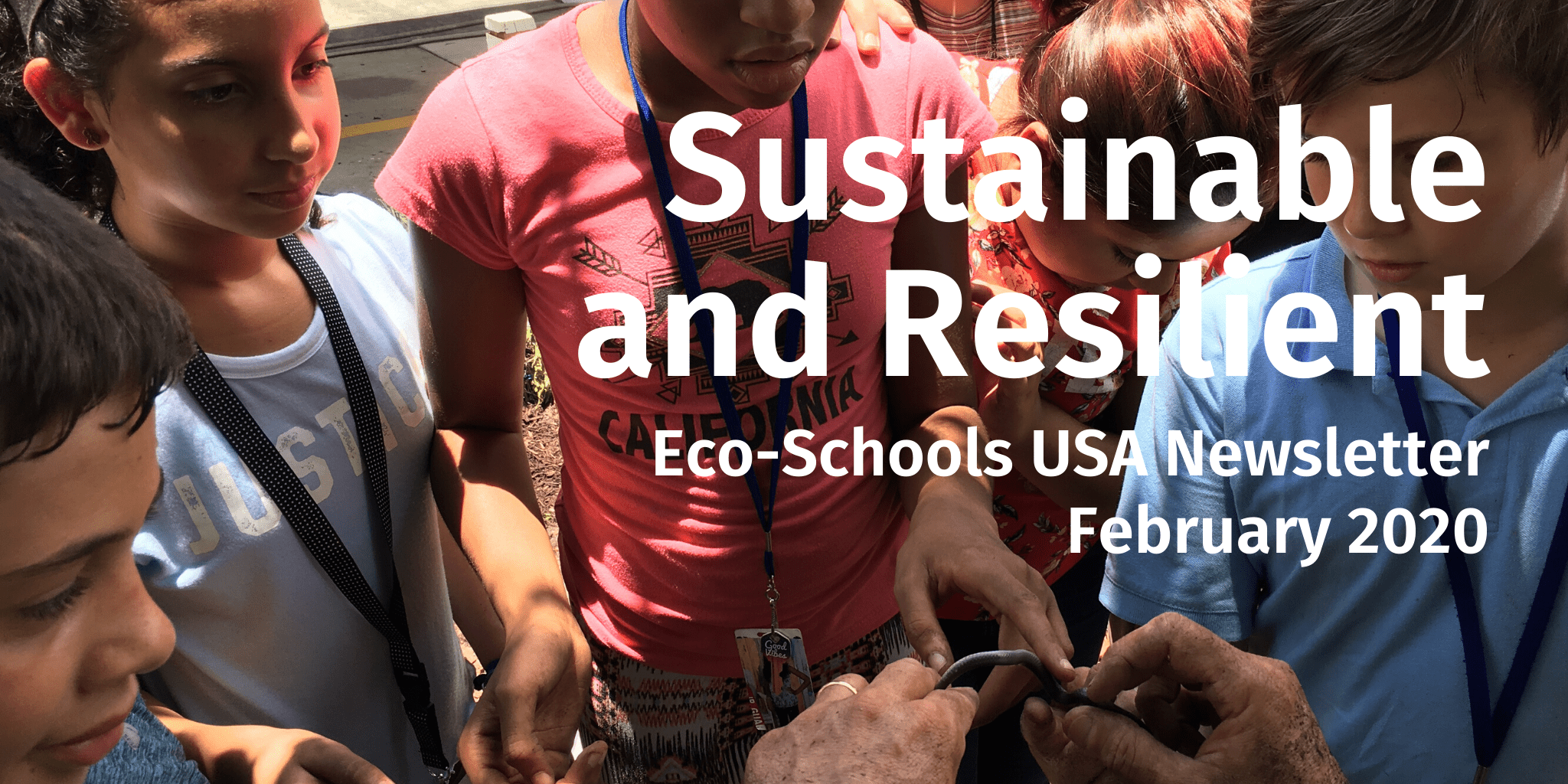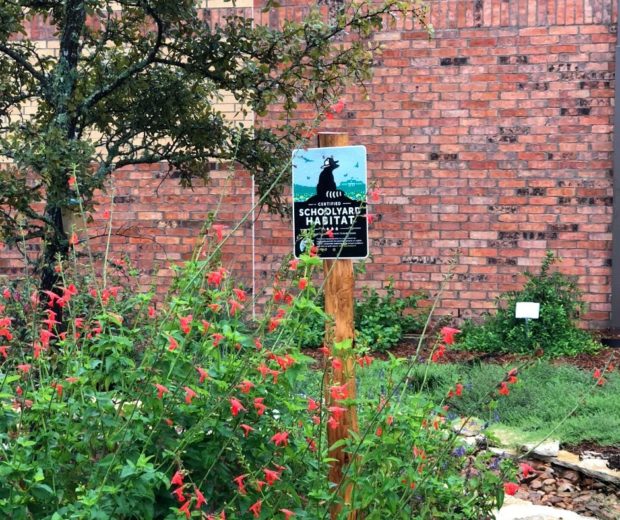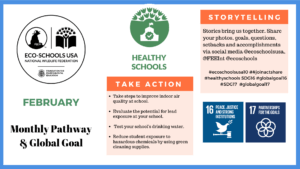We have much more to do and your continued support is needed now more than ever.
Eco-Schools USA February Newsletter

Abolitionist Teaching
~We Want to Do More Than Just Survive: Abolitionist teaching and the pursuit of educational freedom, Bettina L. Love
The practice of working in solidarity with communities of color while drawing on the imagination, the creativity, the refusal, (re)membering, visionary thinking, healing, rebellious spirit, boldness, determination and subversiveness of abolitionists to eradicate injustice in and outside of schools.
In This Edition
- 2020 Events
- Pathway Focus: Healthy Schools
- Schoolyard Habitats® : Certification and Activities for Outdoor Learning
- Current Events | In the Classroom: Nature’s Witness: The National Wildlife Federation Photography Exhibition
- Learning About Wildlife: Year of the Rat
- Green Grants and Opportunities
Spring 2020 Events
It’s time to plan for upcoming opportunities to engage all students in learning around protecting wildlife, implementing climate solutions and connecting students to nature. Add the following campaigns to your calendar and be on the lookout for more information in the coming months.
- Mid-March (Middle and High School): Earth Day 50 teacher professional development, hosted by Eco-Schools USA, Project WET and Project WILD
- April (All Grade Levels): National Wildlife Week
- April 1-2 (High Schools): The National Wildlife Federation EcoCareers Conference
- April 20-24 (All Grade Levels): Earth Day 50 Climate Teach-In hosted by Eco-Schools USA, Project WET and Project WILD
- May: Garden for Wildlife Month
- May 15 (All Grade Levels): Plan and host an Endangered Species Day event
Pathway Focus | Healthy Schools
Goal 16
Promote just, peaceful and inclusive societies
Goal 17
Revitalize the global partnership for sustainable development
Have you ever considered how many hours a day or week students and teachers spend in and around the school building? This month’s environmental focus is on the Healthy Schools Pathway, which provides the framework to ensure students and staff have a healthy learning and working environment. Things such as water quality, indoor air quality, access to natural sunlight, and use of chemical-based cleaners can be targeted for improvement. Specific audits are available for students to assess potential problem areas. For example, it may be important to consider whether lead in the soil is an issue. Students can take the lead by working with district facilities to request cleanup and educate the community. Check out the Top 10 Tips to Create a Healthy School which includes resources such as Keeping Outdoor Play Safe: Simple steps to reduce lead exposure from soil.
Don’t forget to connect the work students are doing on the Healthy Schools pathway to the United Nations Sustainable Development Goals. Students can review Goal 17: Partnerships for the Goals and read Partnerships: Why They Matter. Then discuss why it’s important to have shared goals and build relationships at the local, regional, national, and global levels.
Find more resources related to the Healthy Schools Pathway and the Global Goals by following @EcoSchoolsUSA on social media. Use school assemblies, school news, or other communication methods as an opportunity to share findings with and educate the school community. #HealthySchoolsPathway
Schoolyard Habitats® Certification
With spring just around the corner, are you on track to apply for a Schoolyard Habitats® certification? Whether you are working towards an Eco-Schools USA Bronze award with the Schoolyard Habitats® Pathway, or just creating a wildlife habitat, taking steps now will help ensure your school has all the elements necessary to apply for certification before the end of the school year. The certification is free, with the option to purchase a sign. Signs can be posted in the school’s habitat as a way to share your accomplishments with the school community.

Looking for ways to utilize your outdoor learning space? Green Schoolyards America recently published Experiential Outdoor Learning in the Schoolyard. This free schoolyard activity guide includes over a dozen wide-ranging ideas for outdoor learning.
Get the Guide
In the Classroom | Current Events
Field trips can be a wonderful way to engage all students, but in today’s busy classrooms, logistics often stand as a roadblock. The National Wildlife Federation has put together a new virtual field trip for students and educators to experience Nature’s Witness: The National Wildlife Federation Photography Exhibition. From the classroom, travel around the world to see wildlife in their natural habitats and learn why #wildlifecantwait. The format is designed to engage students of all ages in discussions about wildlife and conservation while traveling across oceans and continents. Download a free activity guide for classroom use, and encourage youth age 13-17 to enter the National Wildlife® Photo Contest.
Virtual Field Trip
Learn About Wildlife
Did you know 2020 on the Chinese calendar is known as the “Year of the Rat?” This month in Ranger Rick® Magazine, students can learn all about rats. Find out how they are built for survival, from their long tails to their sturdy front teeth. If you can believe it, rats and people share some commonalities – check them out. The February free Ranger Rick® Educator’s Guide offers a classroom activity for students to accompany the story.
Green Opportunities and Grants
- 2020 Saving Endangered Species Youth Art Contest (includes ideas for classroom discussion topics and art lesson plan). Enter by 3/1/20.
- The 2020 Craig Tufts Scholarship Award is now accepting applications for a scholarship to attend the week long Family Nature Summit. Deadline to apply is 3/20/20. Learn more and apply here.
- Enter the National Wildlife® Photo Contest; entries due by 3/29/20
- National Wildlife Federation EcoCareers Conference April 1-2, 2020
- Take Climate Action by making a pledge to take positive action for the planet. Learn more
- The World’s Largest Lesson – Global Goal 16: Peace, Justice and Strong Institutions Global Goal 17 Partnerships for the Goals
- 2020 Farm to School Grant Request
- Bow Seat Ocean Awareness Contest, Climate Hope: Transforming Crisis; Enter by 6/15/20
Professional Development






















